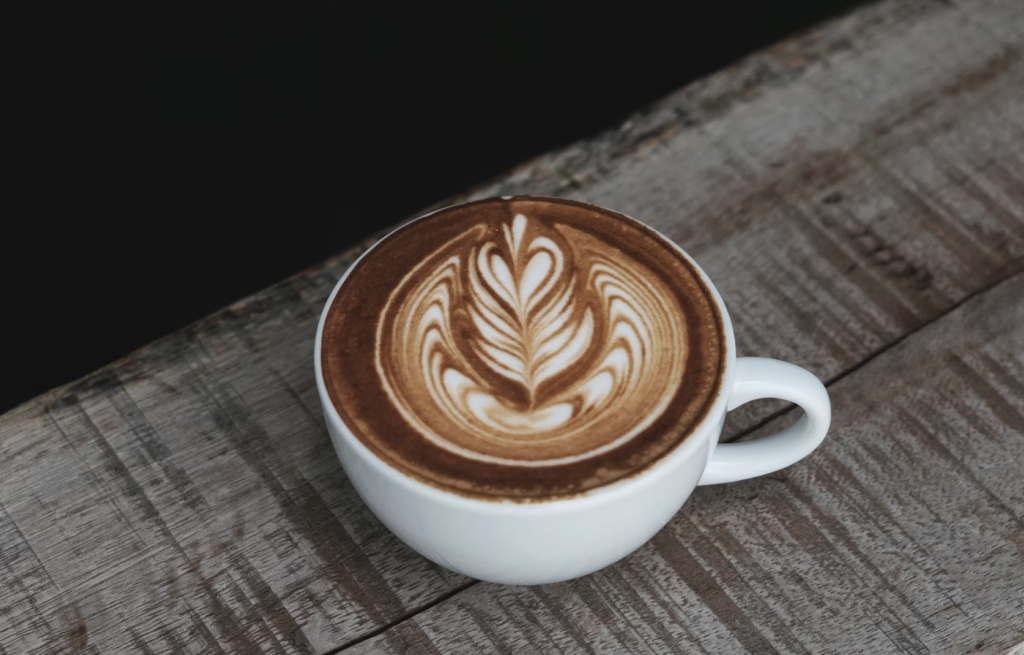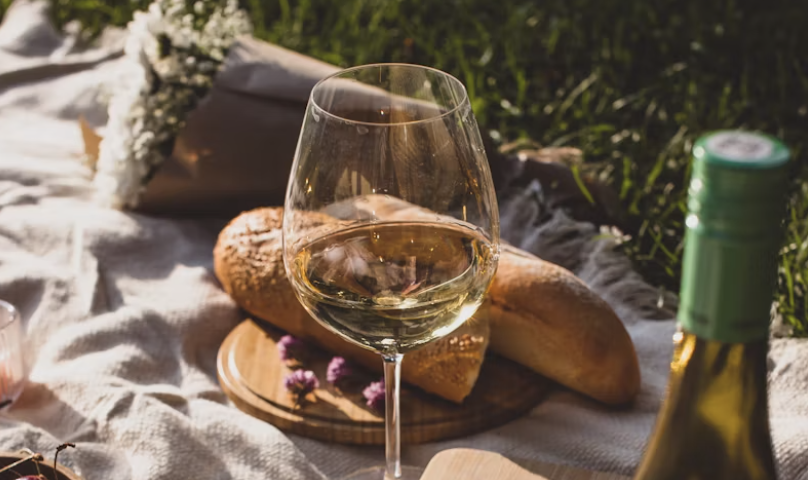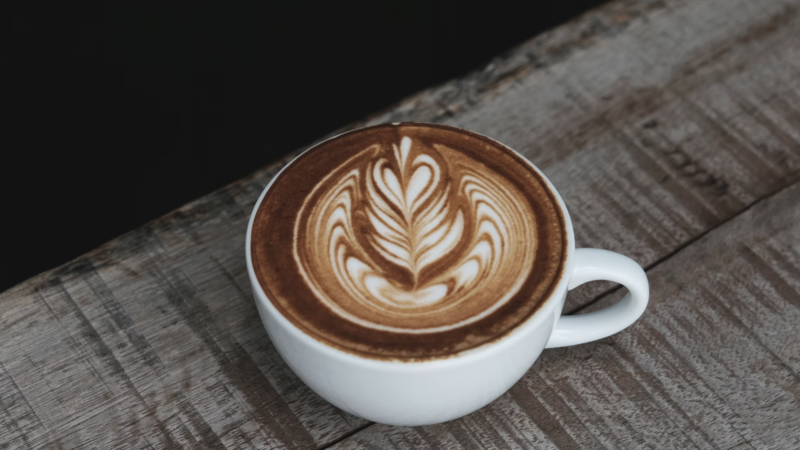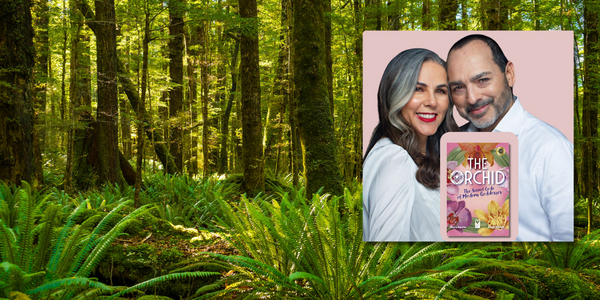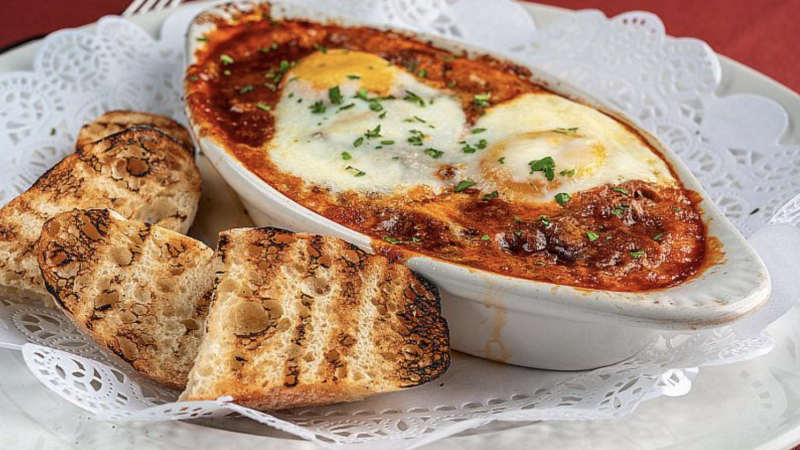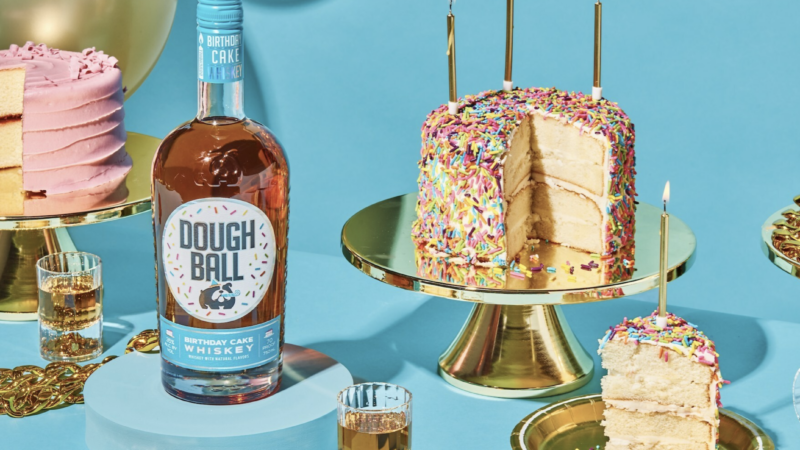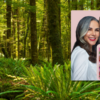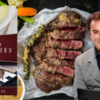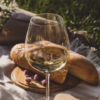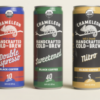Las Vegas hosts International Pizza Expo: Pizza expert Colby Strilaeff Reveals 2024’s Top Pizza Trends
Fresh off yet another showstopping display at the International Pizza Expo in Las Vegas, Hormel Foods, the maker of the best-selling retail pepperoni in the United States and a market leader in foodservice pizza toppings, is again driving the conversation on what’s trending in the pizza-topping industry.
Pizza expert Colby Strilaeff reveals 2024 Pizza trends
Pizza expert Colby Strilaeff, brand manager of Foodservice at Hormel Foods, helps the company keep its proverbial finger on the pulse of the pizza-topping needs of foodservice operators, and after experiencing the annual Las Vegas trade show, Strilaeff identified the top-five pizza trends to watch out for in 2024:
- Ribbon pepperoni: This topping needs no introduction in Canada, where shredded pepperoni is a staple, but Strilaeff expects the same trend to take off in the United States. Inspired by the pizza stylings of Windsor, Ontario, the introduction of HORMEL® Ribbon Pepperoni is already a game-changer for American foodservice operators, allowing for quicker pizza preparation with pepperoni that spreads as easily as shredded mozzarella. Ribbon pepperoni is also a foodservice-friendly option for non-pizza applications like pastas, subs and calzones.
- Giardiniera: A condiment with deep Chicago roots, giardiniera is a celebrated tradition in many Italian American households. Giardiniera, which means “from the garden” in English, is a pickled assortment of vegetables like peppers, olives and cauliflower, submerged in a tangy mixture of vinegar and oil. The result? A flavorful medley that perfectly complements a variety of dishes, especially pizza. Italian sausage and giardiniera is a particularly delicious and increasingly popular flavor pairing on pizza.
- Global flavors: Culture continues to reveal itself in pizza. “New international flavors are always being introduced in pizzerias across the country,” Strilaeff said. “It’s one of the fastest growing trends in the industry.” Flavor profiles from far and wide are featured on menus across the United States, with familiar profiles like Mexican, Cuban and Indian flavors emerging as commonly sought-after favorites. Global ingredients like chimichurri, gochujang and miso are also adding a flavor twist to popular slices.
- Post-bake creativity: Cooking a pizza isn’t the final step of the pizza-making process, especially these days. “We’re seeing a lot more people get creative with what goes on pizza after it is taken out of the oven,” Strilaeff said. Ingredients like chili-infused oils and hot honeys have emerged as popular post-bake pizza toppings. Shaved Parmesan is another commonly applied accompaniment, as are basil and other leafy greens; rocket, arugula, etc.
- Sesame seed crust: While not a traditional ingredient in pizza-making, sesame seeds are an increasingly popular addition for those craving an extra crunch in their pizza crust. “It adds a delicious, nutty undertone, which people really enjoy,” Strilaeff said. Whether garnished over a glistening, buttery crust or folded into the entire dough ball, look for the trend of sesame-seed crust to take off.
Hormel Foods has a long-standing reputation for creating innovative and delicious products for foodservice operators, including ROSA GRANDE® Cup & Char Pepperoni and FONTANINI® Cup & Char Sausage, both of which were successfully debuted during last year’s International Pizza Expo.
For more information on HORMEL® Ribbon Pepperoni and all other Hormel Foodservice products, visit hormelfoodservice.com.
YOU MIGHT ALSO LIKE
Las Vegas hosts Wine Spectator Grand Tour 2024, Eve Bushman Reports Back!
Eve Bushman‘s Wine Spectator Grand Tour 2024 Las Vegas
Last Saturday night, at Resorts World Las Vegas, Eddie and I covered our very first Wine Spectator Grand Tour tasting!
Eyeballing this one for a while, as all the wines scored 90 points or greater – any 90-point and up wine awarded blind by Wine Spectator means a lot in my opinion – and there were 235 wineries represented!
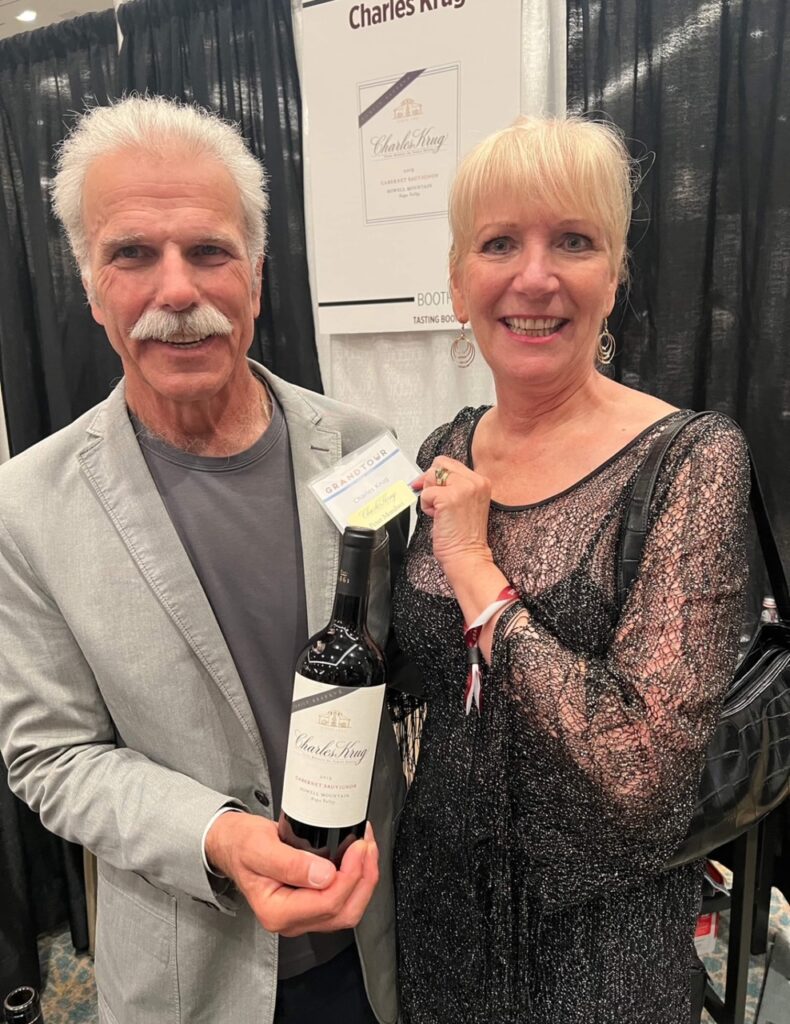
Las Vegas hosts Wine Spectator Grand Tour 2024, Eve Bushman Reports Back!
I had some California favorites I wanted to try, and of course dozens from around the world.

But, knowing me, covering the event was going to take most of my time and I would be lucky to hit up just so many tables, with that in mind these were my favorite wines and their numerical scores:
Vina Almaviva Puento Alto 2021, 96.
Cakebread Cabernet Sauvignon Napa Valley Benchland Select 2019, 91.
Bodega Catena Zapata Nicolas Catena Zapata Mendoza 2009 (Cab and Malbec), 94.
Cesare Amarone Valpolicella Classico, 2018, 91.
Louis Roederer Brut Champagne Collection 244 NV, 93.
Chappellet Cabernet Sauvignon Napa Valley Signature 2019, 93.
Charles Heidsieck Brut Blanc de Blancs Champagne, NV, 93.
Charles Krug Cabernet Sauvignon Howell Mountain Family Reserve 2019, 94.
Chateau de Beaucastel Chateauneuf-du-Pape 2021, 94.
Chimney Rock Cabernet Sauvignon Stags Leap District 2021, 94.
Croft Vintage Port 2017, 97.
Cuvaison Pinot Noir Napa Valley Los Carneros Small Lot Spire 2021, 92.
Darioush Cabernet Sauvignon Napa Valley Signature 2018, 92.
Far Niente Cabernet Sauvignon Napa Valley 2021, 92.
Frank Family Chardonnay Carneros 2021, 92.
Hall Cabernet Sauvignon Napa Valley Kathryn Hall 2016, 96.
Laurent-Perrier Brut Rose Champagne Cuvee NV, 92.
Marques de Caceres Rioja Gaudium Reserva 2018, 91.
Mollydooker Shiraz McLaren Vale Velvet Glove 2019, 94.
Pasqua Amarone Della Valpolicella Mai Dire Mai 2013, 91.
Pio Cesare Barbaresco 2019, 93.
Robert Mondavi Cabernet Sauvignon Napa Valley 2019, 91.
Roederer Estate Brut Rose Anderson Valley L’Ermitage 2015, 93.
Sandeman Tawny Port 20 Year Old NV, 92.
Schramsberg Vineyard Brut Rose North Coast 2020, 93.
Stag’s Leap Wine Cellars Cabernet Sauvignon Stags Leap District S.L.V. 2018, 94.
Taub Family Cabernet Sauvignon Rutherford Beckstoffer Vyds Georges III 2019, 93.
Tensley Syrah Santa Barbara County OGT 2021, 94.
Torbreck Grenache Barossa Valley Hillside Vineyard 2021, 93.
Trimbach Riesling Alsace Frederic Emile 2016, 94.
Vina Don Melchor Cabernet Sauvignon Puente Alto Vineyard 2021, 96.
Vina Montes Purple Angel Colchagua Valley 2020, 93.
Yalumba Cabernet-Shiraz South Australia The Caley 2018, 95.
Zenato Amarone Della Valpolicella Classico 2018, 92.
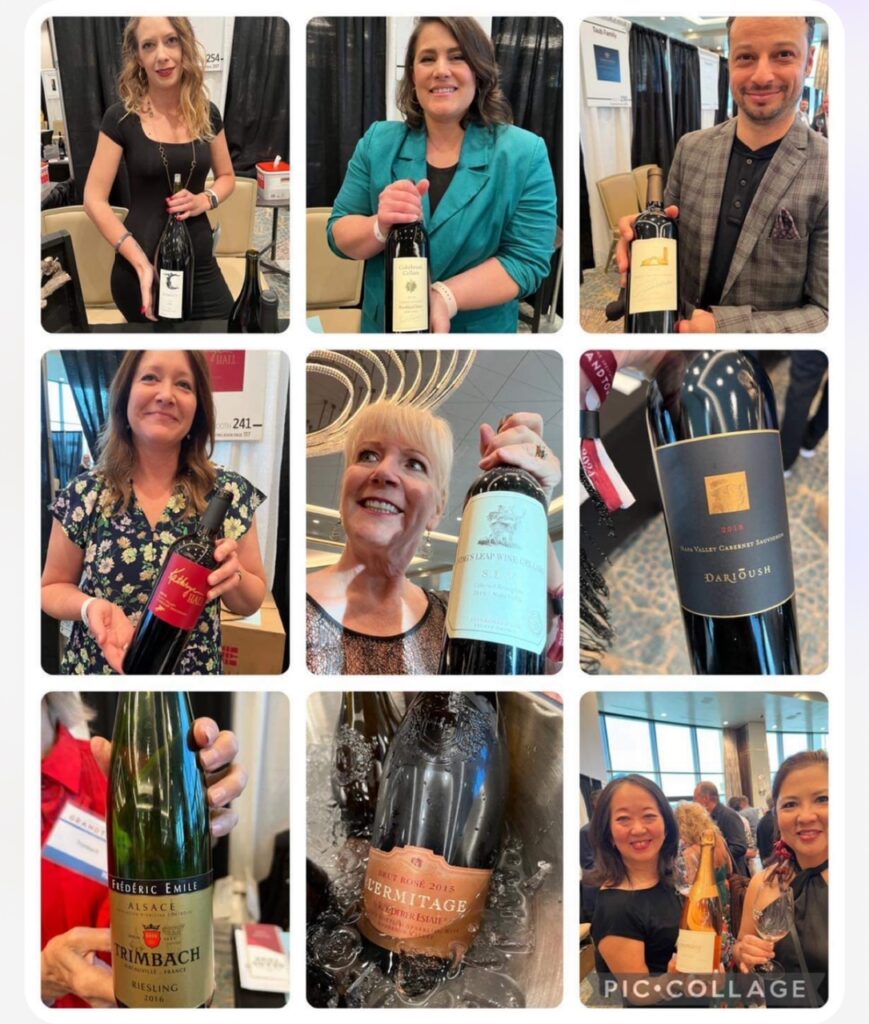
Event Notes
You can get there 30 minutes or so in advance to check in, get your wrist band and wine glass voucher.
Lots of people lined up to get in, but once the clocked chimed the appointed hour, we were in the large tasting room within minutes.
The dining room had plenty of seating, with different food options – Italian and Mexican – and a dessert table. We went for the pasta, carbo-loading for our stamina, which we enjoyed after the first hour.
Bathrooms were close by, plenty of water stations, pour out buckets and if there was a line at a table you could just go to the next one.

IMHO there is no reason to wait at a particular table at this event as you know everything they are offering is a top-scoring wine. The winery representatives were extremely knowledgeable about their wines.

View the wineries that participated here.
Eve Bushman has a Level Two Intermediate Certification from the Wine and Spirits Education Trust (WSET), a “certification in the first globally-recognized course” as an American Wine Specialist ® from the North American Sommelier Association (NASA), Level 1 Sake Award from WSET, was the subject of a 60-minute Wine Immersion video (over 16k views), authored “Wine Etiquette for Everyone” and has served as a judge for the Proof Awards, Cellarmasters, LA Wine Competition, Long Beach Grand Cru and the Global Wine Awards.
You can email Eve@EveWine101.com to ask a question about wine or spirits.
Vegas Begs for Better Coffee, They Traveled the world to find it, Dr Christina Rahm from Rahm Roast Coffee
Vegas Begs for Better Coffee, They Traveled the world to find it, Dr Christina Rahm from Rahm Roast Coffee
Today we’re talking coffee! The rich and delightful taste of Rahm Roast, crafted from carefully selected coffee beans straight from Guatemala.

Dr. Christina Rahm is a scientist, supermom, devoted partner, and the ultimate coffee aficionado!
With a passion for detoxing and a mission to uplift lives, she’s not just about the lab coat life; she’s out there exploring the globe in pursuit of both science and the perfect cup of joe.

Today’s conversation has been edited for length and clarity. For the full, un-edited conversation, visit FlavRReport’s YouTube channel here.
Joe Winger:
So what I love the most is your introduction, Dr. Christina Rahm, “Mother. wife, scientist and coffee lover.”
Dr. Christina Rahm:
Thank you. Yeah I always start with mother. Now my kids are older. I’m like, am I supposed to say mother to adult children? They were such an integral part of my life. And hey, that was the reason I started drinking coffee. Just to be honest, I had to stay awake to take care of them.
Joe Winger:
Do you remember what first inspired you to get interested in coffee?
Dr. Christina Rahm:
Motherhood, basically..
I grew up in a home where everybody loved coffee but me. I remember when I had my 1st child, and I was thinking, how do all these mothers stay awake?
I worked back then too. It was a lot, working and taking care [of my first baby].
I was delusional because I thought I’m going to have my son, and I thought, I’ll go back to work on Monday. Cause you don’t know. I remember that Monday getting up and calling my mom and saying, “This is not doable. What am I going to do?”
I had a job where they let me take him to work, but still it was a lot. And my mom was like, you’re going to have to drink coffee.
So I started drinking coffee.
My parents loved it growing up. They would offer us coffee with cream and sugar when we were little.
I grew up on a farm and they would offer it and I’d be like, no, I don’t like it. I was the only one in my family that didn’t like it, but I learned to love it after I had a child.
Then I three more [kids]. But I love the taste of it.
Also, as a scientist, I had a pituitary tumor and different types of cancer.
When I started researching, you can’t ever claim that a natural substance cures anything, but I did notice there were certain types of coffee and coffee beans that caused cancer cell death, apoptosis.
So it was one of the things that I added to my regimen.
What happened was, the cancer metastasized and I was trying to eat everything from spirulina to coffee to resveratrol.
I did give up alcohol for a while.
Then someone said one glass of alcohol is good because of the resveratrol.
So I added wine back in [to my diet].
But like I learned to love [coffee]. The more I researched it, the more I understood that it had mold and mitotoxins and it had all kinds of things.
Even though the pure bean could help from a physical perspective and from a healthcare perspective because of the pesticides and GMOs in the land, air and water that we have.
I hate bringing up the topic because people [think] the environment’s not that bad.
The problem is, regardless of your political stance, our environment is not healthy like it used to, because we’ve had so much pollution/
Nuclear war and when a nuclear war happens, it does not leave the stratosphere.
It disseminates across our world.
So a our things – plants and herbs and roots and seeds – you have to be very careful where you get it.
Most of my career I focused a lot on detoxification and really helping clean out the environment.
Things I’ve worked on… You can go to the store and buy coffee or buy vitamins and they can have heavy metals, lead, mercury, horrible things in it.
I don’t want to scare people.
Instead, I’ve worked on creating some things that hopefully will help people feel, look, and be better because we just all need to be as great as we can be.
There’s no easy, one pill solution, right?
Coffee was definitely something for me.
People drink [it] every day, and if they’re going to drink it, I’m hoping they drink something that’s, free of mitotoxins, that has a good pH level, that is fair trade.
I had a whole list of things that were so important to me.
When Rahm Roast launched I was very happy because we ended up getting a 91% cup score. We worked really hard for that. Only 1% of the coffee in the world has a score that high.
But I think what was more important than a score, what’s that going to do for you?
What really matters to me is that the coffee did not have toxins and the coffee did not have heavy metals and it hadn’t been exposed to GMOs or pesticides.
If my name was going to be on it it better be something that’s really helping people and making their life better. That was important to me.
Joe Winger:
Two words you said a second ago, let’s connect them: coffee and detoxification.
What does that process look like for Rahm Roast?
Dr. Christina Rahm:
I went all over, even to Ethiopia because [they] have great coffee.
I would meet with different coffee plantations and different owners trying to find a really good place. We ended up being able to find a place in Guatemala that was on top of a mountain, which had never been exposed to GMOs and pesticides.
The water’s clean, the air’s clean.
It was a very isolated place. We decided we wanted to partner with a business that was small. All they cared about was making something that was just really unique and special. [Unlike most other businesses] they were not worried about mass production.
They’re worried about making sure that it tastes good, which taste was important to us.
But the biggest issue was let’s make sure that everything is fair trade, the organic, the vegan, we wanted everything. I wanted to be sustainable.
For me, sustainable is not enough.
We need to remediate things because you can to be sustainable. It’s not completely accurate, right?
I have a lot of patents based on remediation of things and making sure that you’re not just detoxing, but you’re helping the plants and you’re helping everything grow.
Because we should have this much top soil [gestures to 6 inches] and now we have this much top soil [gestures to 2 inches] and there’s not enough nutrients in it that help the plants and the roots and the seeds. They’re just not the same.
We explored all of that and came up with a process to clean the beans and detox the beans of any kind of monotoxins, mold, fungus, bacteria, viruses, anything surrounding it.
I developed that in 2015. I started by basically writing a series of patents that had to do with getting rid of nuclear waste.
The regeneration of land, air and water and the human body and also the reversal of aging.
What I’ve learned as a scientist and as a human being is to admit failure every day, and then to admit that I’m going to try to be better every day.
And that’s what happened with the coffee.
It was a one step process that involved a four day process to make the cleaning and it’s made from basically a zeolite silica trace mineral vitamin mixture which goes in and cleans the beans.
I think that’s the reason our cup score is so high because the PH level basically getting rid of all those minor toxins, all the things, the beans that are harmful or could be harmful creates a ph level that is very conducive to our body.
I don’t know if you know this, but our Earth is composed of silica and water, right?
As humans, we are too.
So when you put something in your body, you want to make it compatible bioavailable to the body. And I would say that’s another proprietary thing that I do. And I work on things I’m working on.
Understanding the DNA of a coffee bean, and understanding our DNA and then understanding how they would work copacetically together.
Another thing that was really close to me that I actually have not talked about in any interview is the fact that. With coffee and coffee enemas and different things that people have, there’s like a 70 percent increase right now in colon cancer. It’s horrible. And I would credit that to the environment and to all the things we’re being exposed to.
And even vegans are getting colon cancer. Even younger people. You can look it up.
It was in the New York Post, everything else. So I wanted a coffee that a doctor decided functional med doctors or doctors in other countries wanted to help with this area that could use it as a colon cleanse as well.
Again, I have not talked about that anywhere, but for me, it was essential because as a person that’s had so many different types of cancer, I want to put things in my body that will help my body.
What’s interesting about what I do for a living now, I used to work in pharmaceutical and biotech and we could say.
We don’t cure bronchitis, but here’s zithromax to help with bronchitis and it does right from my perspective.
Giving people things that make their body, make them achieve the greatest thing they can, that, which is to be their best self, it’s so important.
And if those things that we give them can also improve the cellular health of their body by making the healthy cells healthier and making the cancerous or the sick cells not even wanna be there, then that is a goal.
There’s been all kinds of studies, there’s all kinds of information which shows that could be possible.
But again, the problem is in theory, yes, that can help people in different areas of health.
But in reality, I don’t feel like it has because I think the coffee beans and coffee has been exposed to so many things in our environment that then sometimes we’re putting more toxins into our body.
So that was really a major focus for me when I worked on the coffee.
We drink coffee every day and we deserve to have really good coffee.
I’m not saying,me making spaghetti and saying my spaghetti is the “best spaghetti in the world.”
I will tell you that I’ve traveled to 89 countries and I’ve studied this for years and this has been a topic of mine since I was in my twenties, that has been important to me.
Then my oldest son, my Mom used to give him the coffee with the sugar and the cream and he would just keep drinking it.
And I would get in an argument with my Mom about why are you giving my Son coffee now?
He’s bouncing off the walls. He just loves it.
So he put fire under my feet on it. I was like, I’m too busy working on all these other projects.
He was like, “Mom, you have to make good coffee.”
Because some people drink four or five glasses a day. So it needs to be healthy for you.
It’s just like water. If you’re going to drink water, you want to drink healthy water; and water is part of the process when I make the coffee too. It’s a specific type of water that helps clean the beans.
It’s interesting. I tried to do it in the United States. I could not find a master coffee maker that could do what I wanted.
I found one in Cyprus [Greece].
So I was in Cyprus introduced to an award winning coffee grinder coffee maker.
He’s won awards all over, [ he] understood my process, understood how to do it.
Then after you tasted it, after it went through the process, he was like, this is amazing. This is the best coffee ever. And again, it makes sense.
Like when we’re healthy, we look better, right?
When coffee beans are healthier, they taste better. They’re better.
It’s just simple and I love it.
I think it’s magical how science works and how all of our DNA is connected. We’re connected to a leaf on a tree. We’re also connected and able to bring coffee to the world that’s going to help people.
I think it is probably one of the things I’ve enjoyed the most in the last three to four years of my life.
Joe Winger:
That’s beautiful. Obviously you have a huge scientific background. Our audience is into the flavor. Food, spirits, wine, coffee based on flavor.
I’m sure you can understand how science can intimidate so many of us.
Is there a very simplified way of explaining what makes Rahm Roast good for the body, good for the planet?
Dr. Christina Rahm:
It’s like going to an organic farm up in the mountains where everything’s perfect and tasting a bite of a watermelon and it just tastes so great.
Or of strawberries.
When you go to these places on these islands that have never been exposed to GMOs and pesticides.
And you’re like, why does this taste better?
Sometimes in the United States, you’ll buy a rose for someone and it doesn’t even smell like a rose, but then you’ll go to a tropical island where they don’t use GMOs or pesticides and it smells so beautiful.
This is the most beautiful rose. It smells so amazing.
The coffee was made and sourced from a single source in a place that was the perfect environment that we could find. We looked everywhere.
Then the process. That was made basically cleaning it until it was beautiful and perfect. It’s like you brush your teeth, you take a bath, you look better.
If you don’t shave or brush your teeth or take a bath for two years, then you may not look the same as you look today.
This coffee has been cleaned in a very holistic way, organic way using only natural.
It tastes amazing. It tastes almost like chocolate.
It’s very smooth.
Using zeolites [like they] used to line the ducts of the Aztec and Incas and Mayas and the pyramids. It’s documented throughout history and all I did was take a process and make sure it was cleaning so that it would look beautiful.
I think it’s simple.
I sourced it from the most amazing place that had not been exposed to pesticides and GMOs, that was fair trade, that everything was a sole source farmer.
We knew everything about the history. I want your audience to also know this.
It’s not just the beans and the plants.
It’s the parent plants and the genetics behind it.
When you see race horses. They breed, right? You pay a lot of money if you have a winner from the Kentucky Derby. Because it’s genetics.
There’s a genetic component and there’s always this debate about genetics and the environment.
Which one’s better?
And so to me, both are important.
So I looked at the genetics of the plants and the seeds
I made sure the environment was a really good environment to raise a healthy environment to raise these amazing coffee beans. And then we just cleaned them and made them even more beautiful so that everyone could taste how amazing they are.
Scientists made GMOs to try to make plants bigger, better, right? That failed.
So as a scientist I went back to school, I went to Harvard and studied nanobiotechnology for a very different reason than most people think.
I studied to see how we could reverse it.
Things naturally from things that we’ve put into our world that weren’t natural, that have hurt us.
Joe Winger:
Incredibly inspirational.
From a corporate point of view, can you talk a little bit about what inspired you to pursue the social responsibility of the company?
Dr. Christina Rahm:
In my career, I worked for the government. I’ve worked for a lot of the top pharmaceutical and biotech companies.
I would say I failed at that in many ways.
Our economy depends on spending a lot of money on health care.
It was a hard time for me, but I never gave up.
From my perspective. Since I had cancer, since I had Lyme’s disease, since I had a child that had cancer, I’ve devoted my life to trying to do the right thing. I have an opportunity to be alive for a reason.
It was a blessing, even though I didn’t feel like it was a blessing when I was diagnosed. I have a warrior strength of fighting anything.
We’ve just got to be better humans, right?
My goal is to make every person have the longest, best life possible.
That means mentally, emotionally, physically, and spiritually. And as a scientist, I feel like it’s on my shoulders and my responsibility to tell the truth and to do it in a positive way instead of being a whistleblower blowing things up.
I want to offer these things that can help people.
About 8-9 years ago, I started really stepping up and talking about social issues, working on female empowerment. I just always try to talk about how we can empower.
When you have gifts, if you have influence, if you have money, if you have power, your job is to protect those weaker than you or that need help.
And somehow we’ve lost that in our move for success.
We think we don’t we forget about that. But for me, that’s my motive to make social change is to it’s my responsibility to be a good human. I’m going to die someday. And I’m going to have to answer for everything I’ve done on this earth.
So I have to try every day to be better.
The coffee was something that was for a social change that I think we need to be aware of without scaring everyone.
And so that has led me to move past that. To run companies. I have 22 companies actually under DRC ventures and a lot of people don’t know that. So there’s 22 companies that I’m actually in charge of right now, trying to make some good social changes in the world.
Joe Winger:
For our audience who wants to learn more about your and Rahm Roast Coffee, what are the best ways?
Dr. Christina Rahm:
DrChristinaRahm.com is my website.
I’m on social media at Instagram, LinkedIn
The root brand sells Rahm Roast at RahmRoast website. We also donate from every bag of coffee to philanthropy as well.
Vegas Knows this Secret About Loving Yourself: The Orchid Book Conversation with co-authors Rocio Aquino, Angel Orengo
The Secret Behind Loving Yourself: The Orchid Book Conversation with co-authors Rocio Aquino, Angel Orengo
Rocio Aquino and Angel Orengo, co-authors of “The Orchid” are, as their website shares partners in life and spirit, wanderers who found home in each other’s hearts.
Their journey together has been filled with a myriad of cultures, beliefs, and encounters with both the ordinary and extraordinary.

The Orchid: The Secret Code of Modern Goddesses
The Orchid: The Secret Code of Modern Goddesses
The story focuses on five of these women, each wrestling with unique life challenges such as closeted sexuality, career pressures, spousal abandonment, sexual abuse, eating disorders, and manipulative behavior.
As they engage with the program’s curriculum, they peel away layers of self-deception, pain, and societal conditioning, discovering that the love and solutions they seek already reside within them.
The Orchid serves as both the setting and the metaphor for their collective journey toward self-realization and empowerment.
Today’s conversation has been edited for length and clarity. For the full, un-edited conversation, visit FlavRReport’s YouTube channel here.
Joe Winger:
We’re talking about The Orchid: The Secret Code of Modern Goddesses.
I go to a lot of book events, and a few weeks ago in Los Angeles, I went to The Orchid’s book signing. What I was amazed by was there was so much emotion in the audience. Big smiles, happy tears.
What are we missing in our lives that your book, The Orchid, helps us recognize?
Rocio Aquino:
How beautiful [of a] question. I think, to be honest, that we are perfect already. And we forgot.
Angel Orengo:
Yeah, I think we forget that at the core life doesn’t need to be that difficult. It’s not that complicated that we allow ourselves to be complicated by the things around us, by the things that we’re told, by the way we think our lives need to be, by the number of houses, clothing, shoes – everything right that we need to have.
The moment you bring it down to the basics and you’re like, yeah, life should be simple. We are okay. We’re just learning here. We’re back. We’re like in a school and the teacher wasn’t angry because we got it wrong. On the contrary, it was just like, Oh, don’t worry. I’ll teach you.
Joe Winger:
So what I’m interpreting is, people are having these emotional realizations because they’re remembering your message that they’re perfect already?
What do you think it is about that audience interaction that your book is giving?
Rocio Aquino:
I was in the front, so I was not as intimate like you and your perspective. But what resonates with me and what I see that can resonate for someone else is that they know and they understand that they are not alone on this journey.
The struggles they are feeling are real. They feel the difficulty. Everyone at some point is [feeling] who here has a difficult path? Everyone is like me. That connection is not superficial, but it’s more in a deep way when you are in a group setting after being so disconnected really to talk about the important things that matters in life has another connection.
Angel Orengo:
We’ve gotten large amounts of feedback by now. Some people are touched by the fact that someone has written a book selflessly to help them. I know there were people that were touched very much by that.
I think you understand what that means really, it was all about how do we help the reader get to a different place, right?
Go from point A to point B, right? There are people that for the first time find themselves in an environment where they can treat themselves with some kindness, where maybe they haven’t stopped to think about that before. Because we try to block it.
It’s easier to numb pain than to experience it and let it go.
Other people are [having the realization that] it’s not that complicated. I’m just so happy that I found this now. I think it’s just all of that energy.
The energy in the room that day was really powerful. When you’re in the presence of that energy and by presence, the collective – it wasn’t us. It’s we – emotions come to the surface, and that’s how we clear emotions, and that’s how we clear energy.
Thank you for sharing that because I didn’t realize that was happening.
Rocio Aquino:
We didn’t have any idea and remember, we have two teenage daughters. They bring us back to reality really quickly at our house.
Joe Winger:
Going to the actual book itself between the characters, the descriptions, their backgrounds.
What’s real? What’s fiction? And for fiction, what inspired it?
Rocio Aquino:
Everything happened, everything is real, but never happened all together.
Angel Orengo: And not to those people.
Rocio Aquino: We know that some of the places exist and all the situations exist.
The fiction is today there is not a place that you can go for free to heal in this way. But we hope that someone will open it. Let’s hope we can do it..
Angel Orengo:
Yeah, the characters, the book is absolutely real.
Every single thing that happens there has either happened to us or happened to someone we know, or we’ve read it in the news.
The story about the model and the sexual abuse that’s real, right? It’s happening in the modeling industry now where they have gone through their own “Me too” movement.
There is a scene in which “Olivia” is doing a silent walk and she has a vision of her mother near her. [to Rocio] That’s something that has happened to you, about your own mom who passed away.
There’s a scene in which “Olivia” is speaking to her father. It was a difficult relationship and her father wasn’t the best version of a father that he could have been.
That a lot of it is after my own experience with my own father, who I met three times in my life. One of which, the longest, was five hours. So we took pieces and through the help of everyone who collaborated in the book to construct these characters that brought together all these experiences.
We wanted to write the story of Rocio, who morphed into “Sophia”, and then we realized that we wanted to tell more that we needed that in order to be of service to the people who would be reading the book, we needed to tell more stories because there are so many things happening to women out there that we don’t hear about that we wanted to do justice by representing as many of them.
That’s where it all comes from.
Rocio Aquino:
The same happened to us when we were reading, not writing the book. We were crying constantly. At one point I put it down, we were crying [so much]. Then we did it first in English and after in Spanish and then we were crying in Spanish so was like, “Okay I’m continue to heal.”
The process for us was really intense
Angel Orengo:
The experience that you’re having [the audience and reader’s emotion], everyone is sharing similar things. It’s simple, but as I’m going, I find myself thinking about things that I’ve never thought about in my own life.
I need to put them down. Sometimes it takes me a little bit before I pick it up again. So it’s like peaks and valleys of intensity.
Joe Winger:
As authors, how are you feeling now knowing that so many people are having such extreme feelings and discoveries from your pages?
Rocio Aquino:
You never know how your work is going to be received, to be honest.
Even though we have a very strict culture of not judging anyone, being totally neutral, we are going to make suggestions.
Now that people are seeing the book, it’s a pleasure, it is humbling.
Angel Orengo:
There was intentionality in what we were writing. The book came after our first year of deep introspection into who we were and how we wanted to change our lives. [We studied] a lot of self help books. At the time that we started writing, it was about how do we share this with people who normally don’t have access to information
Also for people who don’t have resources to go and spend time in a retreat for a weekend or spend $5,000 or even $500. [We thought] we should do television because this is our background. But let’s own the intellectual property, the story behind it.
[We thought] we should do television [series], but let’s own the story behind it.
So when we sit down with the people who are going to help us craft the TV show, we have a say in how it’s made. Right now what ends up happening is that people don’t think that love is powerful enough to deal with the issues that you have around you.
We think that we have to combat anger with anger or force. That’s what we’ve been raised to believe. We’ve gotten to a point where love really does conquer all, but not in the way in which we were taught.
So when we approached a book, it was, “Let’s do it with a lot of love,” we said, and if we can help one person, it’ll have been worth it.
Everyone who we are connecting with is having similar reactions so it’s humbling. We’re filled with gratitude beyond belief that we were chosen, selected, inspired to write what we wrote and to put it forth.
Not just write it, but really now be the face of it and take it to as many places as we can.
Rocio Aquino:
That’s the main point. When someone says “Thank you”, because now that means I can continue to share with more people. If more people feel better about themself, that is incredible. That’s our main point to invite everyone to our party.
If more people feel better about themself, that is incredible.
And the part is really, if you are feeling better about yourself? Great! So it’s about that.
Joe Winger:
During your book event introduction, you mentioned one of your goals is to bring The Orchid to real life. Where are we today with that goal? How can the audience help you?
Angel Orengo:
Everything in your life begins with an intention. Waking up in the morning, getting off your bed, right?
Everything is intention after intention. The first and most important thing that we want is for people to truly enjoy the book because through the enjoyment of the book, there is a transformation that’s taking place.
We now understand that the way to change the world, and even though this is not the ultimate intention is the indirect intention, we can make this place a better place to be for all of us.
It begins by me feeling better about myself, and you feeling better about yourself. And it begins by all of the things that we create.
All these things these women are experiencing in The Orchid.
To your question, the first thing is for people – and it’s happening already – to say, wouldn’t it be awesome if this place really did exist and these transformations were taking place. If one person says it, it’s a big deal.
If a million people begin to think that way, or a billion people begin to think that way. Wow. It is about the power of what we have to manifest.
In terms of The Orchid as a retreat center, I think there are versions of it throughout the world already. There are many places that exist. I think those places will be inspired when they read our book to go to a different level. We can do more to expand the way we’re doing this.
There are podcasts down the line. There are television shows that we’ve mentioned. There’s a digital community that we would like to work on and develop. There is a nonprofit because there are going to be issues that will require that approach.
We’re going to continue building this community that ultimately is going to want to continue conversations as to how I deal with this.
Even though we attempted to do a very complete seven day experience at this retreat center, the truth is that the experiences can vary greatly.
There’s so much more out there.
We only depicted a number of healers. The number of healers and healing modalities out there are endless. I believe it will happen.
We have had initial conversations with certain people about it, but I would say it’s in early stages.
I would much rather encourage everybody who is already well advanced into a retreat center to look at themselves and see if there’s anything that can be learned from ours and create their own orchid so that we can help more people around the world.
Rocio Aquino:
Yes. Take the lessons, what you learn and it really is, “How I can begin to have a conversation with someone.”
Joe Winger:
As authors, can you talk a bit about what your writing process was like? What was the timeline going from idea to finished, published book?
Angel Orengo:
We began our process for the book at the end of 2021. So it took us about two and a half years.
We’ve come across a lot of people who say, ”Wow, that’s fantastic.” It took them nine years or 10 years and so on.
We were doing this 24 hours a day for two and a half years.
We relinquished everything else that we were doing and we dedicated ourselves to our growth, our personal growth and introspection, which in itself was the core of what’s at the book and to crafting putting on paper as many of the thoughts and ideas that we had.
The first step was Rocio and I basically went back and forth. We started thinking about which things worked. At first she was the guinea pig. She was experiencing things, a lot of healing practices.
Rocio Aquino:
It’s a process. Experiencing different things, and at the beginning you don’t have it very clear, but you begin, “Okay, this was my story.”
The main thing was to teach the lessons in a very original way. When you are relaxed, when you are in your house watching TV or reading.
You begin to question, is this serving me or not? The process of putting our learnings on paper.
Everyone is a creator. We can create and create.
No one is going to have our perspective. Angel was very clear [about] what he likes in life and has never spoken bad about anyone.
In my mind, I was not like that. I was speaking bad about people. But then I learned the power that [kind of speaking] represents and now I don’t want to do it.
But it’s those lessons that you begin to learn [from]. I grew up with that different paradigm, and now that I know another one, I prefer the new one.
Because it gives me more freedom, creativity, and everything.
We put everything in place. We worked hard to make this happen because our motivation was to do a book for [the younger version of] me 32 years ago when I tried to kill myself and I didn’t have the tools and I didn’t have anything.
So this is a book that I wish my mom had before she passed away 32 years ago.
The motivation was really to spread that another way of thinking was available. So we were in a hurry, like this needs to be available for those Rocio’s, for those Pepitas who were out there, who are out there and need to have something that they can grab quick, and they can begin to see a change.
Angel Orengo:
I would add, the process of writing the book was truly experiential. It wasn’t just spitting it out, we were living certain things.
There were times we stopped the book to have an exercise of releasing energy.
What we realized as we were writing, there were things inside of us that needed to be addressed.
Whether it was an experience that happened when you were a child…
I can’t tell you the times where we were crying, deeply moved by what we were writing and reading and how that was cleaning us inside and how that was changing us.
We went through different hurdles.
For example, we realized at an early stage that the book could not be judgmental about anything. if we were going to connect with readers, right?
We had no idea that we needed to ensure that the people at the Orchid, Mary and her staff. [They] never looked at anybody and said, “Oh, I’m so sorry.” It’s more, “We know we’ve been there. You too can heal from that.”
And so all of those things emerged as we were writing.
There was intentionality and some clear ideas as to how we wanted to proceed. The truth is that we were experiencing and adjusting as we went.
Rocio Aquino:
With a lot of respect.
Angel Orengo:
With a lot of respect for each other, the people we were collaborating with, and the reader.
Joe Winger:
The book is called The Orchid: the Secret Code of Modern Goddesses.
The color scheme, it’s primarily female names, from a traditional or direct point of view, it’s geared more toward a female audience.
As the authors, trying to get a guy in a woman’s life to read it. What would you encourage them to say to get a guy to read it?
Rocio Aquino:
#1, I’ve been a woman and reading many books about guys, written by guys and I love it.
So maybe it’s time for a guy to be open minded. I can do this and I can read a book about women.
#2, it’s incredible to go in the deepest way of thinking of women. So try to understand how they work and what they are thinking. This is a fantastic opportunity. It has so many good sides because you want to have a better understanding of your mom, of your sister, your girlfriend, your wife, your daughters.
Then you’ll have a better way of how women relate to each other, but how do they relate to themselves, and how you can be an ally in their process.
Angel Orengo:
Recently I was writing a brief article for a fraternity that I belong to and I was very active when I was in college.
Essentially the article is to inspire them to read this book. The issues that we talk about, whether it’s sexuality, limiting beliefs, the power of forgiveness, the power of gratitude or any of the other issues that the women who are there are speaking of, they’re universal.
They’re not gender based, right?
So any opportunity that you have or that you give yourself to relate to those issues, it’s an opportunity to grow.
I think for men for far too long, we’ve defined masculinity as “the absence of emotion” or perhaps the “existence of physical strength.”
More and more we’re finding out about emotional intelligence, right?
That emotions in general and our ability to share them to be vulnerable is powerful and can only enhance the people that we are.
I would say be open minded. The issues are truly for everybody. You can learn a thing or two, not just about yourself, but about the women in your life.
It’s and it could be really powerful. Plus let’s face it, the better we communicate with one another, the better we relate to one another across genders the better our community is going to be, and we need more community in the world.
I think if anything has shown us, and this is true at any time, right?
Every person you speak to, we’re all longing for community. We need connection. We need to connect more with each other.
Rocio Acquino:
Deep connection, not superficial.
Joe Winger:
The book is called The Orchid, The Secret Code of Modern Goddesses.
Wrapping up, for people out there who want to buy the book after hearing about it, Whether it’s websites, social media, how can we follow you? How can we buy the book?
Rocio Aquino:
There are so many ways right now. We have a website: TheOrchidBook.com
You can find the book in English and Spanish.You can buy it on Amazon, and Barnes and Noble, Apple, and we have the audiobook too.
And the exercise, if you want to do a book club with your friends, you can do some exercise that are on the website.
Instagram, Facebook YouTube, TikTok. All @TheOrchidBook_
You Might also like
-
Henderson’s favorite Italian restaurant Gaetano’s Announces Sunday Brunch Starting January 14
Gaetano’s Announces Sunday Brunch Starting January 14
Co-Owners Nick and Sarah Palmeri are proud to announce for the first time ever, Henderson’s favorite Italian restaurant Gaetano’s will be adding Sunday Brunch service.
Starting January 14, 2024, Gaetano’s will be open for brunch every Sunday from 10 a.m.-2 p.m. with a menu of Italian inspirations and American classics, bottomless options and creative twists.
“Brunch is very popular in Las Vegas and Henderson,
so we thought a long time about what we could offer that was a little different…”
says Nick Palmeri
“Brunch is very popular in Las Vegas and Henderson, so we thought a long time about what we could offer that was a little different,” says Nick Palmeri. “Our brunch will be comfortable and chill, lots of fun but definitely not a day club.”
Highlights from the Sunday Brunch menu include:
- Tricolore Bruschetta: fresh tomato garlic & basil, avocado, cannellini white bean & rosemary $12
- Marsala French Toast: panettone fruit bread, Marsala wine, powdered sugar, and bananas $20
- Eggs in Purgatory: two organic China Ranch eggs, shredded short ribs, grilled crostini $28
- Panini Mortadella: mortadella, stracciatella cheese, roasted red bell peppers, mixed greens, pesto aioli potato chips $18
- Roasted Red Pepper Carpaccio: stracciatella cheese, toasted walnuts, microgreens, grilled crostini $22
- Rigatoni Vodka with chicken or sausage $30
- 10 oz. Prime New York Steak with two organic China Ranch eggs, potatoes, grilled crostini $42
Several vegan options will also be offered. ‘Bottomless’ options, carafes of Aperol Spritz, Sangrias, cocktails, mocktails and wine will all be available.
Reservations are not required, but always recommended, and can be made at gaetanoslasvegas.com.
About Gaetano’s
Founded in Calabasas, CA, and located in Henderson, NV since 2002, Gaetano’s is a second-generation family-owned restaurant serving classic Italian recipes. Owners Nick and Sarah Palmeri offer a seasonal selection of house-made pastas and entrees in an elegant dining room with five-star service.The restaurant also features regular wine and whiskey dinners, a popular happy hour, and have recently added Sunday Brunch.
Gaetano’s
10271 S. Eastern Ave. #111 Henderson, NV 89052 | 702-361-1661
Facebook: @gaetanosristorante.lv | Instagram: @gaetanosristoranteSource: https://vegaspublicity.com/
Post Views: 5,398 -
Food That Seduces: Daytime TV Star Thaao Penghlis Seducing Celebrities in his newest Project
Daytime TV Star Thaao Penghlis Seducing Celebrities wants to Give You a Taste at his next dinner party. Read all about it in his new book.
Thaao Penghlis has starred in some of the biggest TV shows of all time – including playing on daytime TV’s “Days of Our Lives”.
Thaao Penghlis new book Seducing Celebrities: One Meal at a Time
Now in Thaao’s new book, Seducing Celebrities: One Meal at a Time he reveals seduction in the dining room by creating incredibly delicious for his famous friends.
Today’s conversation has been edited for length and clarity. For the full, un-edited conversation, visit our YouTube channel here.
Joe Winger
Congratulations on your new book. It’s a tasty read and a fast read.
Thank you for joining us for a conversation today.
Thaao Penghlis:
Thank you for inviting me.
Joe Winger:
You’ve done a lot of work in your life. We’re going to go to food and books as quickly as possible.
When you’re at an airport or in public, what is the most common thing people remember you from?
Thaao Penghlis:
Certainly Days [of our Lives]. There’s a big Armenian contingency out there who always comes at me at the airports, [Days…] was in 152 markets. Especially when you’re in New York and it’s an international port. When Mission [Impossible] was on. I certainly enjoyed that. I think it had a large male audience because of the action and that I liked it was interesting. That kind of prepared me for the masks that I did on Days [of Our Lives]. So it was a real challenge. Working in daytime; I think the biggest challenge is remembering all those lines and giving it some kind of conviction and taking those lines off the page.
And a lot of the time, because there’s too many lines, we’re just on the edge, and so because I have a certain intensity I’m able to cover. I think through all those years people, airports probably are the biggest. I’m going to do a PA [public appearance] at the Grand Canyon in August.
It’s a very special train ride through the Grand Canyon with just 22 fans. It’s going to be a very intimate affair. So over the years, you get the older people who are the real followers, because the youth today have different appetites.
Just like they do with food, they’re not always conscious about what they’re eating. Unless they’re educated about it or they’re raised on good food. And I think today food has become a convenience rather than a celebration.
Joe Winger:
You use wonderful words in your book. It feels almost like poetry. “Food is the magic of our universe.” Can you elaborate on that a little bit?
Thaao Penghlis:
We’ve been given such diversity as far as food is concerned, that we have that many choices, especially in countries that can afford food. But to me, once you’ve grown up tasting octopus – we used to hang it on the [clothes] line for three weeks until it dried out. There’s no blood in the octopus, therefore, it doesn’t rot – that was mouthwatering.
Some of the fruits you have in life, like mangos. When you can appreciate the way they’re being served. It’s not like eating an apple. If you eat a mango and you slice it, then cut it up in quarters, there’s a different texture to it. The flavor. To the eye it becomes attractive. I think food, when you think about what you can control in your life and you are blessed to have it. I think food is magical because of that.
Joe Winger:
One more line of food poetry from your book. “You discover your body’s secrets by the way you feed it and how it feeds you back. “
Thaao Penghlis:
When we who are in the Greek Orthodox church, we go through a fast to the last day [of holidays like Easter] before we go to the church and get the bread and the wine.
You start to appreciate the food that you can’t have because of its limitations in the religion. The last day you’ll have olive oil on bread with some sugar, things like that. So when you get to food and understand it, when you stop eating and cleanse your body, sometimes it just juices, you become hungry.
You get to understand what food does to the body by emptying it out. If you don’t eat well, or if you eat late, then the next day, you’re not going to feel great.
So you get to understand what the body can take and what, and when, are the limitations to eating and at what hour, if you drink too much wine.
As an actor, I don’t drink very much. But if I have wine, the next day, my eyes are going to show it. So it tells me something about the kidneys, because the eyes are connected to the kidneys. So it’s understanding how the machine you’ve brought into life carries your soul. How does that express itself in the best way possible?
As actors, we have a responsibility because of that body being presented on camera as a certain responsibility to the producers to the show and to your audience. So you get to understand. I would go through a four day fast with Bela’s broth, Celsius broth. I would find that would cleanse me through the days I did like a liver cleanse, which got rid of stones.
You get to understand what the organs are, that you can do things naturally without having to take all those dreadful medicines and those pills.
The body is all we’ve got. Why have I overcome certain things in my life? It’s always been through nutrition.
Joe Winger:
Your journey, the things you’ve learned, and you touch upon that in the book a little bit, lessons you learn from different actors and producers and people you’ve worked with, but that’s another great lesson is as far as using it as a medicine.
The book is called Seducing Celebrities: One Meal at a Time. It is an enormous undertaking: beautiful pictures, recipes, Hollywood stories, your family. There’s a lot going on.
What inspired you to write the book?
Thaao Penghlis:
The hardcover has all the colored pictures inside. So it has a different dimension to it when you actually see it, because let’s face it, presentation is very important.
So when you see color, when you see something displayed you want to get into it. If something looks like someone just piled something, it’s not attractive to the appetite.
My manager called me one day and he said, “You always talk about food. Why don’t you do a cookbook?”
I went, “Oh, I don’t know how to do a cookbook. Everything that I’ve caught has come out of my head.”
I remembered, I learned when I worked at the UN [United Nations] for a year when I was in the diplomatic corps. In my youth I went into kitchens where they had chefs. I saw presentation. I understood the etiquette of arriving there on time.
45 minutes later you’re having the hors d’oeuvres, maybe it’s champagne, maybe it’s some caviar or whatever they presented.
Then it was time to go into the dining room and sit there. It became a ritual. And so you got to appreciate the time, the presentation that someone put in.
So all these memories came into my head. I said how would you think? How do you think about food? I said it’s really seducing people, isn’t it?
By the way you create an atmosphere, by the way you look at a dish, and by the aroma. So I said, Let’s call it “Seducing.”
I said who have I seduced?
How about celebrities that I’ve met and worked with? That’s how it came about seducing celebrities. One meal at a time.
I always like to serve the first, second and the third course. But usually, I don’t join the guests on the first course, because I’m busy preparing the main course.
So I present the first course to them. Then I’m in the kitchen. The actor, Danny Kaye in the old days. He used to be an expert of Chinese food and around the counter in his kitchen is where his friends sat and he just fed them. That was something that was so gratifying for him.
So I understand if it’s done well, and your friends leave. They take it for granted.
People don’t cook these days, or they’re intimidated because of the way you’ve presented it. So therefore let’s take you out instead. So you don’t get that personal touch that I think is so important.
When you sit around your watering hole, as I call it, that “table”, which is something if when I leave this country eventually and go home to Australia, that is one thing I’m going to take with me is that table because it has a huge history to it.
To me the table and how you decorate it and how you present it is very important to the appetite of the person joining you.
Joe Winger:
I’m thinking of your table, sometime in the future when you do move, that could be a heck of an auction item. The amount of people who sat around it and heard stories and shared stories.
Speaking of those stories, you’ve named huge Hollywood stars like Tom Hanks, Rita Wilson George Clooney, amazing actors, Joanna Cassidy, William Hurt.
Your Hollywood life has been so many decades of work and amazing people. What was the process like deciding who makes it into the book and deciding who you had to leave out?
Thaao Penghlis:
You don’t like everybody you’ve worked with and everybody you’ve met, food is very personal
In the old days they serve you poison. In the French 18th century, you’d be sitting there and if you were an enemy, they’d serve you a dish with poison. That’s how they got rid of enemies. But I don’t know.
Dame Edna, who I was best man at his wedding, which is Barry Humphries. He was very particular. He was also a person who loved art. So he would walk around my house looking at what kind of a collection and made his judgment on it.
The same thing with the food, he would taste it. He would give you that quite qualifying look that he approves.
Omar Sharif was different. When I worked with him, we had champagne and caviar every day, because that’s the way he lived.
[He would be] telling me stories of Lawrence of Arabia and many of his other films and I think, because I look like his son, he was very taken not in the beginning. In the beginning, he was quite rude and quite distant. It wasn’t until I was about to start the first scene with him where he comes into the room and when I met him, he was distant, shook my hand and said, “Hello”.
So when he comes into the room, he’s supposed to slug me after something I say.
He says to me, by the way, “Please, when I hit you do not go over this 18th century table and break it. It’s very important that we are respectful about this table.”
And I said, Oh, I’m not going anywhere. And he says, what do you mean?
I said, “Oh, Omar. I said, if you hit me and I go flying off that table, where do you and I go for the next four hours?”
He says “What will you do?
I said, “I’ll probably adjust my tie.”
He started to laugh and that’s how it started.
How do you infiltrate a person’s personality who comes in defensive working with Bill Hurt in “Altered States”.
I had some very difficult dialogue because it was very technical. How do you make it real? I started to do this sequence and he says to me, “Is that how you’re going to do it?
And I said, “Why is that how you’re going to do it?”
And from that moment, he goes, “You’re an arrogant son of a…,”
And I said, “So are you.”
From that moment, we clicked. When we joined hands in Mexico, away from Warner Brothers, we had a good bond.
I never stood for his star attitude. You have to call it. So I don’t like it. When someone brings that, I leave that, I go outside.
Joe Winger:
Doris Roberts, after dinner once wrote you a note. I took that idea as an incredibly loving gesture.
if you could talk a little bit about that note, and then any other amazing gifts from you dinner parties?
Thaao Penghlis:
When I approached Doris and she would write the introduction, her comment was, “Oh, darling, why don’t you do that?”
I said, Doris, you’ve been coming here for dinner for years. So why can’t you just get in touch with your heart and write something pleasant?
And that’s what she wrote.
Because every time she came, it’s like my friends who come over always know they’re going to get a good meal. I never go cheap on the thing. I’ve seen people come in the house with daisies in their hand. I said, “Does this house look like it collects daisies?”
Or they’ll bring me Two Buck Chuck.
I said, are you bringing that so I can put it as a wine for the food, because it’s certainly not going on the table and things like that.
Where people are not experiencing you or contributing and also shows you how cheap it is. And even when Doris, who used to get crates of champagne from Dom Perignon for free, because she was connected to somebody who worked there, she would come in.
She would say “Darling, here’s some Dom Perignon, put it in the fridge.”
I said, “Oh, okay. Thank you.” I think, Oh, this is a person who understands quality.
Then five minutes later, she’s sitting at a chair. She says open the champagne for me, will ya?. So I realized it wasn’t for the house. It was for her. So she didn’t bring anything.
Here’s this woman who makes an enormous amount of money. I’ve studied with her for over 20 years with Katsalis, the director, and then she would come in and sit at the table and she would look at the flowers and then she would look at the presentation of everything and then she would smell the food and so through that experience – you don’t always get respect, you have to earn it.
With her, because of my work as an actor, and because of my success as an actor, and also now writing some people will say to you, “Are you writing another book?
But they say it in such a derogatory way.
Whereas Doris said, “I’m so proud of you.“
I went out with Doris, just the two of us went to movies because she always had to have company. She was like Joan Rivers. She had to have every night filled. She couldn’t stand just being on her own. So when she was invited to my home, she always remembered the presentation and the flavors of that evening.
Joe Winger:
Let’s talk a little bit about what was the process of writing the book like this time?
Thaao Penghlis:
Recipes are in my head.
So I had to cook in my head. For six months I started to think, Oh,I never wrote anything down.
I would call friends and say, “What was your favorite meal I cooked?”
Then I would say, Oh, okay, that’s good; and then I would just test my friends and they would tell me what they like the best.
So I got all these recipes that were still in my head. And I somehow remember what I put in it. My sister in law in Australia says to me, the difference between you and I as chefs is that I have to have a cookbook in front of me. You open the fridge and say, what are we going to eat?
I spent six months going through recipes.
Then finally I said, what did my mother cook? The Greek traditional foods or the Greek desserts. And my sisters are very good at cooking desserts.
Then slowly I collected the foods and started to make them.
Joe Winger:
That’s an incredible journey.
We’ve pushed toward the idea of an impolite or a bad dinner guest. How do we find an appropriate dinner gift? And then what would be a definite no?
Thaao Penghlis:
People will ask me, what can we bring?
It’s a silly question because you can’t bring food. So you, what do you bring wine? Or flowers? Or whatever enhances the atmosphere?
But something that’s not here, but sometimes when they keep asking me that, I say, bring cash. And that always throws them because they take it seriously.
So sometimes I won’t answer that question. I said, “Surprise me. But make it expensive.”
So I like to play with them.
I said to a friend of mine once, your hands are always empty. They never spoke to me for three years after that. They turned around and left.
There’d been guests who arrived when you had a seven o’clock dinner and arrived at 9:30. I’ll open the door and say to them, “I’m sorry, we’ve already had dinner. We’ll talk another time.” And then I closed the door because I find it disrespectful.
It tells you who people are and their consciousness. I don’t like unconscious people, but we’re going through a very difficult time in the world.
And it’s all because people are not conscious of others. It’s always about them. And so to me, the wonderful thing about serving food and expecting something in return, something.
Even if it’s – we used to write notes in the old days, a phone call – but texts now have become such a convenience.
Why don’t you just call me and tell me where I spent two days preparing this, that you can’t afford a five minute phone call, but you’ll text me in one sentence and that’s it.
Things like that I don’t approve of.
I think that kind of communication short changes [the memory of the experience]. I want to be at times where you want to cook again. If you’re not gonna share something about yourselves, call me the next day and say, I had such a wonderful evening. Some people think it’s enough when they leave, or they got here,
But they don’t understand how you complete things. Completion is very important. Just as an actor, you have an arc in your character, it’s complete.
The same thing with food.
When I serve food, it’s complete. I have an order: I have hors d’oeuvres. I have a first course. I have the main course. And then I have dessert and maybe some Greek coffee or tea or whatever people need and the wines.
But I just find people are unbelievable. They don’t understand what it takes to put an evening together.
If you don’t know how to treat me, I’m going to show you. So that’s what I said there.
Joe Winger:
Have you ever played with the idea of a cooking show? Is that something you see at all for yourself?
Thaao Penghlis:
It’s a lot of work. All that preparation. I’ve done it as a guest here and there.
Joan Rivers used to join guests and everything, she always made some wonderful jokes.
Dame Edna would make wonderful jokes.
I’m doing a book signing May 22nd at the Grove in Los Angeles at a Barnes and Noble. I’ve got to do a cooking show. I thought what are we going to cook? Something that’s not difficult.
So I’m going to do a vegetarian dish, which is not in the book, but it’s with shiitake mushroom, truffle oils, mint, basil heirloom tomato, raw peas and pine nuts. Then I will mix that in with the pasta and some olive oil and then some truffle oil and with some herbs and that’s about it.
That’s so convenient and it’s such a delicious dish with Parmesan cheese over it.
Joe Winger:
The book is called Seducing Celebrities: One meal at a time
You breezed over Joan Rivers for a moment and I wanted to touch upon it because In that chapter, you help us see her in a different way than what we always think of her as, especially being in the car with her daughter, Melissa as a young girl.
When I think of Joan Rivers, the stereotype, I think of outrageous, and you have one or two moments beyond her, Barbra Streisand, there’s a little bit of outrageousness there, are there any outrageous moments that you didn’t include that you thought about including?
Thaao Penghlis:
I don’t I don’t mind telling stories, or privately telling stories.
There’s got to be a borderline, just like etiquette. If I’m expecting for people to behave a certain way.
One time, there was a famous guest, which I won’t mention, who was having problems with their daughter, and they were sitting around the table. The phone rang in the middle of dinner, and he answered it, he starts screaming on the phone, and telling his daughter off.
I just lost it, I got up and I said, “If you don’t mind, take your bloody phone call outside, we’re not interested in your private business and how rude of you.”
Because I don’t like people bringing phones into the house.
The inner chatter that goes on with people’s minds, where they’re so distracted with life instead of just being there. Being present.
With Telly Savalas as well. There have been times also with people with Days [of Our Lives] and I couldn’t tell those stories because firstly, I have to work with him again. Secondly, I don’t think it’s everybody’s business.
There was a book that Hustler put out all the stories about those magnificent stars of the [1940s] and talked about their sexual proclivities.
Someone said, “Why would you do that?” Why would you betray your friends that way?
You smash the myth. They spent years creating a myth. But when you start getting into the nitty gritty, you make those people ordinary. And show business is not about being ordinary.
So I try to refrain from telling things that go beyond the norm. I want to be able to see these people later in some time, even though they’re gone,
I still believe we’ll see them on the other side that they did more good for me. Otherwise it’s a matter of respect and keeping someone’s dignity there.
Joe Winger:
Your book starts almost like a love note or a Valentine to growing up with your family. Your mother, your father, their first trip to L. A., to your grandfather George’s herrings and olive oil tin.
Thaao Penghlis:
Yeah, that was something to watch growing up.
To see my grandfather bringing his knowledge of food from the islands of Greece.
What I remember the most, even my grandmother, you’ve come down in the mornings and you can smell the cinnamon toast. She would be dipping wicks into wax and creating candles for the church.
Joe Winger:
Seducing celebrities one meal at a time.
Can you give us a tease about what you’re looking forward to in the future?
Thaao Penghlis:
I just finished exploring the Holy Families.
I did a two week trek up and down the Nile to these sacred places. So I’ve written a story because most of the things we see about religion are postcards or lovely paintings. What do we do when we explore it within ourselves and follow those routes? Something else happened.
I’ve written a teleplay. It’s very interesting the way it begins and where it begins and how it follows through into The Great Escape.
Find Thaao Penghlis’ new book on Amazon at Seducing Celebrities: One Meal at a Time
Post Views: 223 -
Nothing like a Vegas Birthday! Dough Ball Whiskey Launches Newest Flavor: Birthday Cake
Dough Ball Whiskey Launches Newest Flavor: Birthday Cake
Dough Ball‘s newest launch, Birthday Cake Whiskey, is a snackable reminder that you can have your cake and drink it, too!
The fastest-growing, top 12 flavored whiskey brand in the U.S.* first crashed the flavored whiskey category in August 2021, with an award-winning Cookie Dough Whiskey that national media publications have crowned “the best of class flavored whiskey.”
Due to the continued consumer demand for flavored whiskey and rapid success in its first year, Dough Ball is expanding its decadent flavor portfolio with a new and innovative Birthday Cake Whiskey. Blending the mouthwatering nostalgia of sprinkled vanilla cake with a smooth, medium-bodied, 70-proof whiskey, Birthday Cake is perfectly crafted for indulgent cocktails, creamy birthday cake shots and celebrations.
“At Dough Ball,
we’re all about creating fun and innovative whiskeys
that push the boundaries on flavor.
We think we have accomplished that with Birthday Cake,”
Joey Parris, Chief Marketing Officer at Patco Brands.
“It’s delicious, nostalgic and makes you feel like every day is your birthday.”
Within a year of launch, Dough Ball Whiskey expanded into over 30 states, becoming the fastest-growing flavored whiskey brand and winner of over a dozen awards, including the Bartender Spirits Awards, SIP Awards, San Francisco World Spirits Competition and more.
“It’s delicious, nostalgic and makes you feel like every day is your birthday.”
Dough Ball’s new Birthday Cake Whiskey is available at select Total Wine and BevMo! locations, with additional retailers to come throughout 2024, including Ralph’s, Albertsons and Walgreens. The suggested retail price of Birthday Cake Whiskey is $26.99.
Dough Ball’s new Birthday Cake Whiskey is available at select Total Wine and BevMo! locations, with additional retailers to come throughout 2024, including Ralph’s, Albertsons and Walgreens. The suggested retail price of Birthday Cake Whiskey is $26.99.
For more information, please visit DoughBallWhiskey.com or follow along on Instagram @doughball_whiskey.
*Nielsen, Total US x AOC + Liquor Plus + Conv, Whiskey Latest 52wks thru 12/30/2023
Dough Ball is a flavored whiskey from Patco Brands
Dough Ball is a flavored whiskey from Patco Brands, one of the fastest-growing beverage companies in the United States. Featuring notes of buttery vanilla, chocolate and caramel, smoothed out with hints of butterscotch, Dough Ball exudes flavors of warm cookie dough goodness in a delicious, 70-proof whiskey. Birthday Cake is a new flavor profile to the whiskey category, with notes of nostalgic birthday cake and vanilla buttercream frosting. Unapologetically unique, versatile and approachable, this Cookie Dough and Birthday Cake Whiskey can be enjoyed as a shot, sipped, or mixed in a cocktail. For more info, visit www.doughballwhiskey.com and follow along on social at @doughball_whiskey.
Patco Brands is for innovative premium alcohol beverages
MPL Brands NV, Inc. dba Patco Brands is a privately held import, manufacturing, marketing and sales company for innovative premium alcohol beverages. Dedicated to making award-winning, ready-to-drink wine-based products, tequilas, whiskeys, hard seltzers and other offerings, the Patco Brands mission is innovation, quality and consistency. Patco Brands is also now one of the largest importers of tequila in the U.S.For more information, please visit www.patcobrands.com.
Post Views: 5,636


